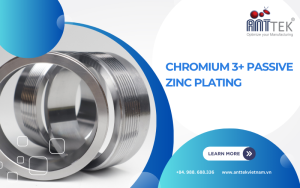Powder coating after CNC machining – Process and Considerations for Successful Powder Coating
In modern manufacturing, the combination of CNC (Computer Numerical Control) machining and powder coating provides a powerful duo for creating high-quality, durable, and aesthetically pleasing metal parts. CNC machining allows for precise and efficient production of components, while powder coating offers superior surface finishing and protection.
The Benefits of Powder Coating
Powder coating is a dry finishing process that involves the application of a free-flowing, dry powder onto a metal surface. The main advantages of powder coating include:
- Durability: Powder coating creates a hard finish that is tougher than conventional paint. It provides excellent resistance to chipping, scratching, fading, and wear.
- Aesthetic Appeal: Available in a wide range of colors and textures, powder coating can enhance the visual appeal of CNC machined parts.
- Environmental Friendliness: Powder coating is more environmentally friendly than traditional liquid paint, as it emits negligible volatile organic compounds (VOCs) and the overspray can be recycled.
- Cost Efficiency: While the initial setup may be costly, powder coating can be more economical in the long run due to reduced waste and longer-lasting results.

The Powder Coating Process
The process of powder coating after CNC machining involves several critical steps to ensure optimal adhesion and finish quality:
Surface Preparation
- Cleaning: The machined parts must be thoroughly cleaned to remove any oils, grease, or contaminants. This is typically done using solvents, alkaline cleaners, or specialized cleaning agents.
- Pre-Treatment: Depending on the material, the parts may undergo additional pretreatment steps such as sandblasting or phosphating to improve the adhesion of the powder coat.
Powder Application
- The cleaned and pre-treated parts are then electrostatically sprayed with powder. The electrostatic charge helps the powder adhere evenly to the surface.
- Automated or manual spray guns can be used to apply the powder, ensuring uniform coverage.
Curing
- Once coated, the parts are moved into a curing oven where the powder is melted and fused into a solid coating. This step typically involves heating the parts to temperatures between 150°C and 200°C (300°F to 400°F) for a specific duration, depending on the powder formulation and part thickness.
Cooling
After curing, the parts are cooled, allowing the powder to harden into a durable finish.
Considerations for Successful Powder Coating
To achieve the best results with powder coating after CNC machining, consider the following factors:
- Material Compatibility: Ensure that the material of the machined part is compatible with powder coating. Most metals, including aluminum, steel, and stainless steel, are suitable for powder coating.
- Design for Coating: Design machined parts with powder coating in mind. Avoid sharp edges and deep recesses that can make uniform powder application difficult. Ensure there are adequate hanging points for the parts to be suspended during the coating process.
- Consistent Quality Control: Implement stringent quality control measures at every stage of the process, from surface preparation to curing. Regularly inspect the coating for thickness, adhesion, and finish quality.
- Post-Coating Operations: If additional machining or assembly is required after powder coating, take care to protect the coated surfaces. Masking areas that need further machining can prevent damage to the finish.
Applications of Powder Coating After CNC Machining
Powder coating after CNC machining is widely used across various industries, including:
- Automotive: For parts like wheels, chassis components, and engine parts that require both durability and aesthetic appeal.
- Aerospace: For components that need to withstand harsh environmental conditions.
- Consumer Goods: For products like appliances, furniture, and sporting equipment where a high-quality finish is essential.
- Industrial Equipment: For machinery and equipment parts that require robust protection against wear and corrosion.
Combining CNC machining with powder coating offers manufacturers a versatile and efficient way to produce high-quality metal parts with excellent durability and visual appeal. By understanding the benefits, process, and considerations involved, manufacturers can optimize their production workflows and achieve superior results in their finished products.

















